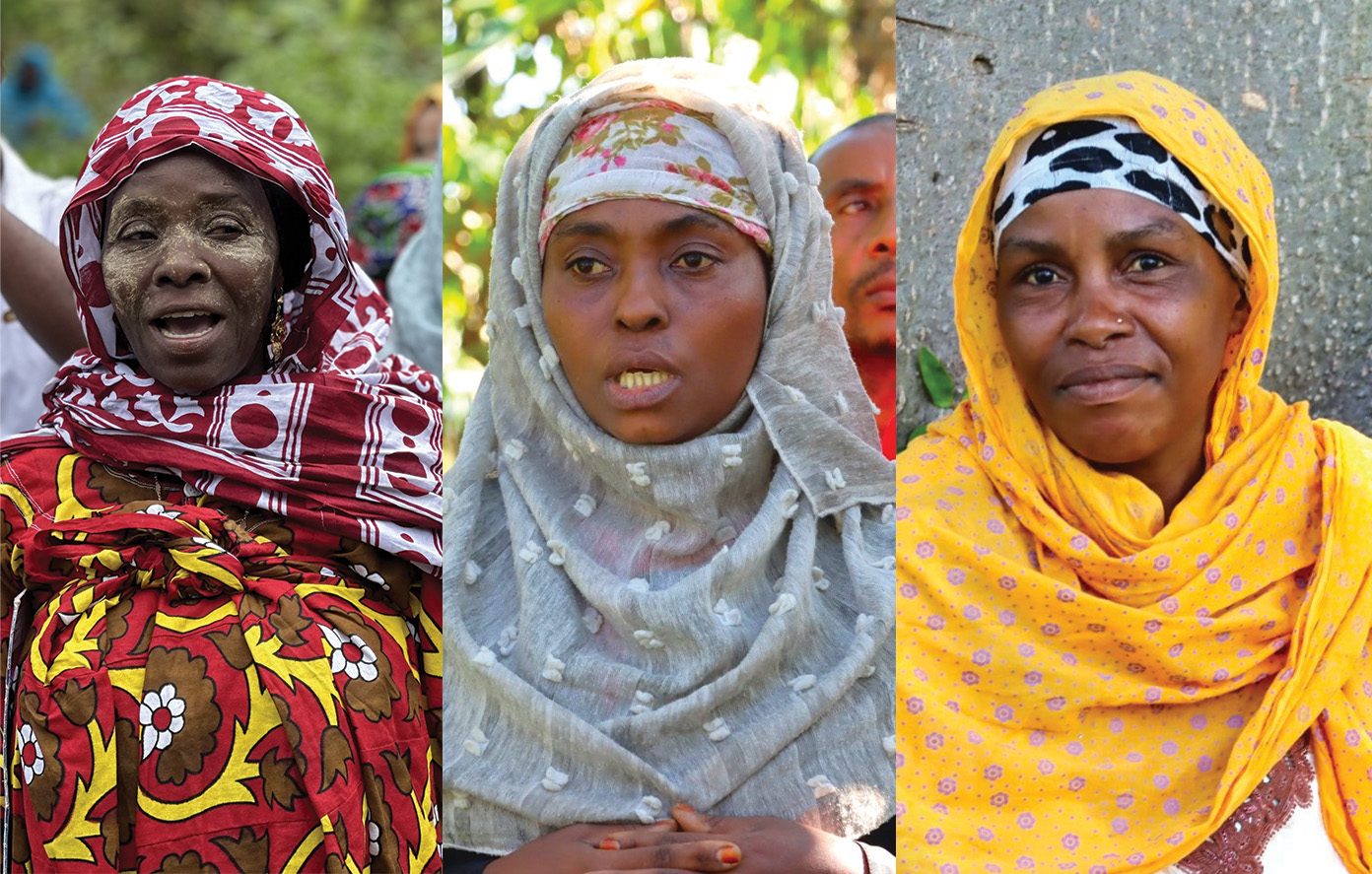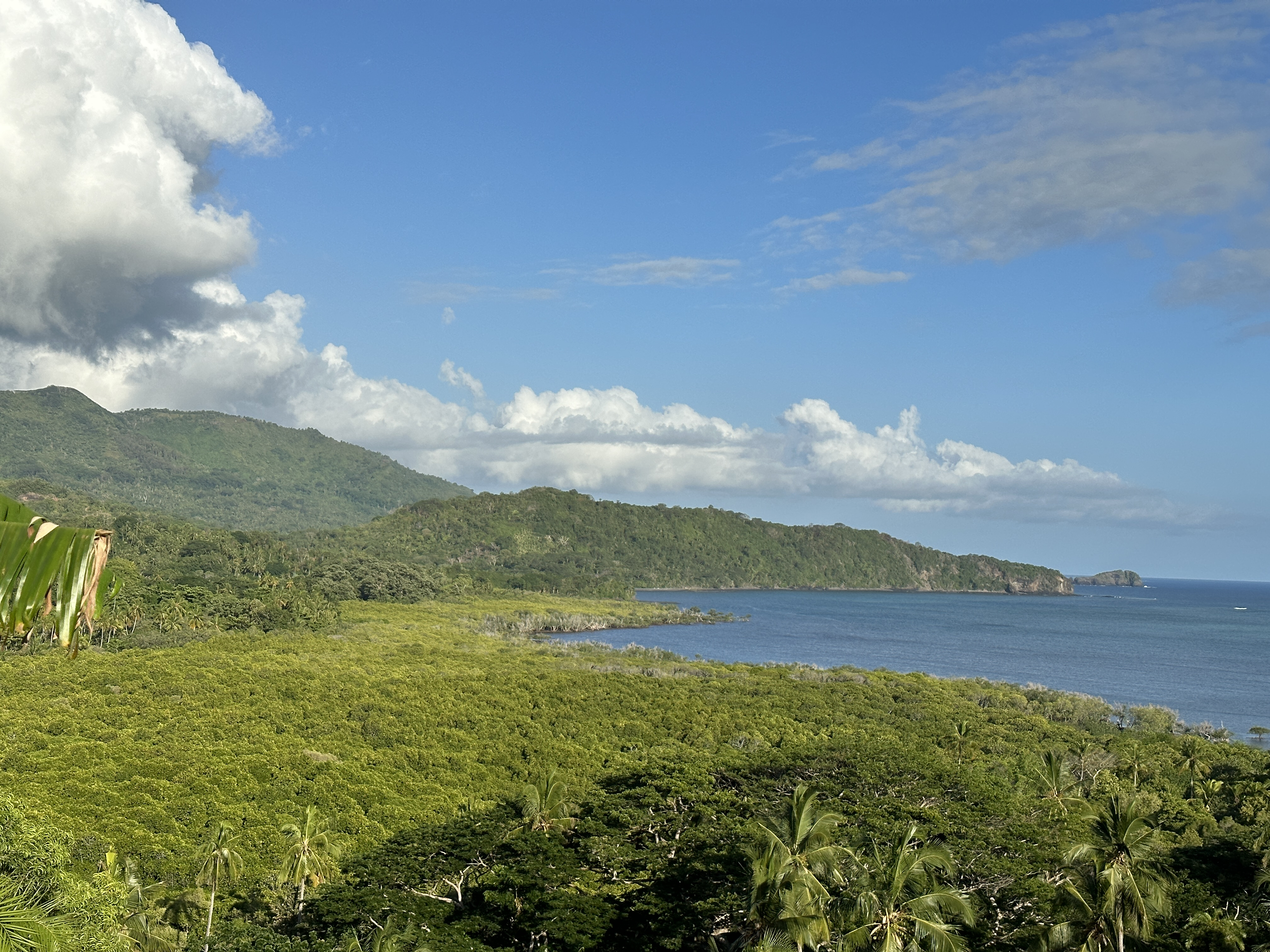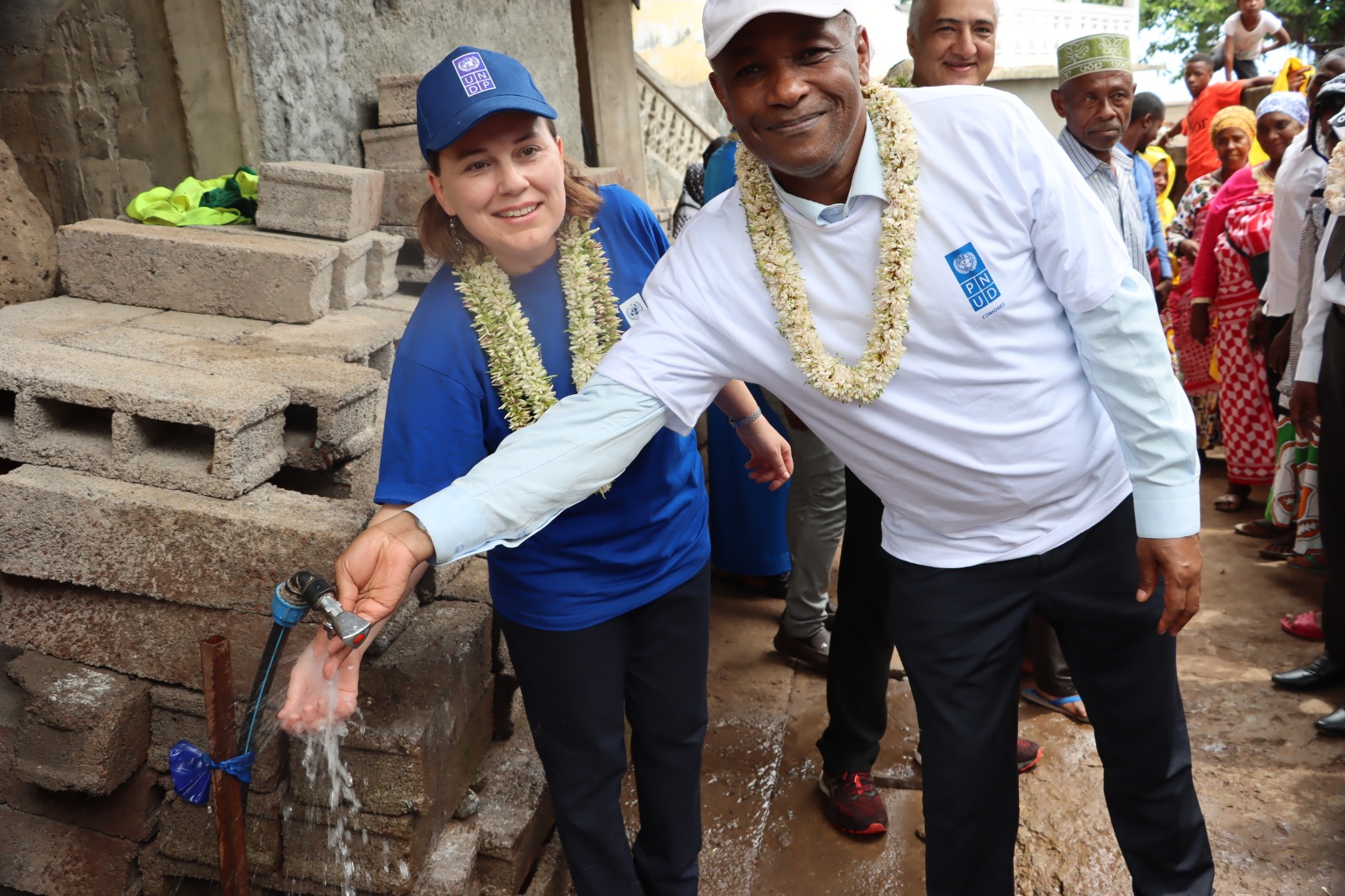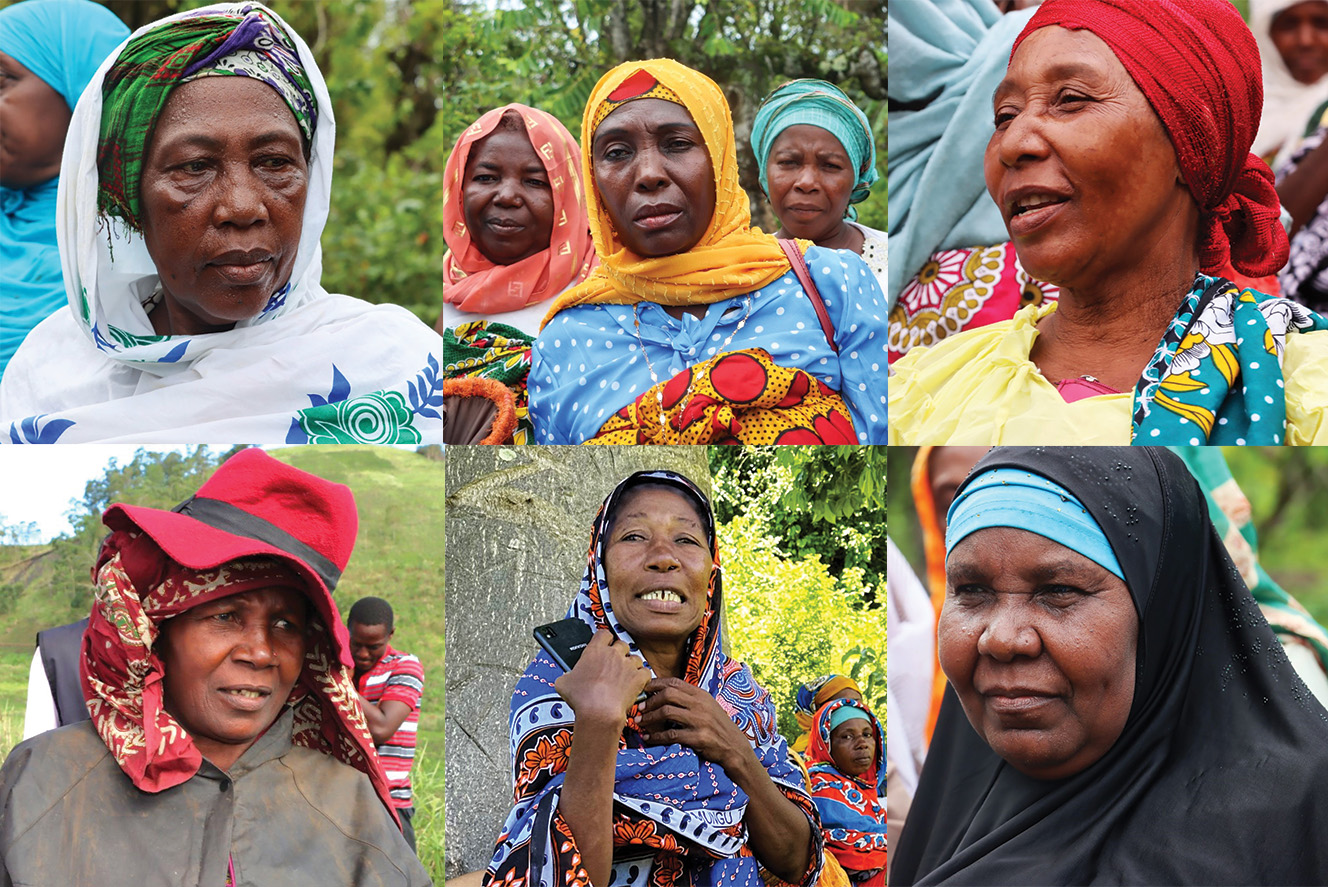Comoros: Opportunity, Ambition and Scale Up.
Lessons for the World from the “Islands of the Moon”
February 10, 2023

One of the most striking features upon descent into Comoros’ Moroni Airport is the breathtaking view of the magnificent ocean. The beauty of the grey beaches is intense, juxtaposed with the effects of cooled lava, carcasses of used cars and uncollected waste — a reminder of the underlying development challenges that lay ahead. From the airport, we set off to visit a government-led initiative on livelihoods and economic empowerment in the agriculture sector supported by UNDP. En route, we see groups of women waiting to fetch water with their jerrycans. Plastic waste strewn by the roadside, a feature of the road that hugs the shoreline.

However, when we arrived at the Centre Rural de Development Economique (Rural Centre for Economic Development - CRDE) in Diboini, we saw firsthand how some of the challenges just observed can be turned into opportunities, bringing transformative change for the people.
An automatic weather station system (also covering other parts of the island) deployed through financing from the Global Environment Facility (GEF) for the Reinforcement of Comoros' Resilience to Climate-Related Hazards and Climate Change (Renforcement de la résilience des Comores aux risques de catastrophes liées au changement et à la variabilité climatique) has strengthened data collection and improved weather and climate forecasting. This data, key to inform decision-making in the face of climate-induced risks, is relayed to the Technical Department of Meteorology (Direction Technique de la Météorologie), where technicians, trained with resources from the GEF and other partners, issue regular forecasts to smallholder farmers. In short, with this critical investment, communities –mostly women– are better positioned to plan agriculture activities, and can therefore expect better yields, in spite of a range of climate- and weather-induced risks.
In the same vicinity, water harvesting tanks were set up through investments from the Green Climate Fund (GCF), working seamlessly in an integrated and systemic manner with financing from the GEF, to counter increasing disruptions to rainfall patterns and water shortages. This simple investment now provides farmers with the option to turn to irrigation, which has increased their production and doubled incomes. The Government, with support of UNDP and the GCF, is at work to extend access to drinking water from 15% to 60% of the island’s 450,000 inhabitants. This is a good example of how development resources can deliver critically transformational change, at scale.

To increase agricultural productivity, promote food security and generate more lucrative earnings for farmers, the Government of Comoros and UNDP, with partners' support, are developing improved varieties of bananas, cassava, sweet potatoes and ginger; training para-veterinarians; increasing the availability of veterinary medicines and improving animal husbandry practices. These efforts have already borne fruit, such as the production of improved breeds of milch cattle, dramatically changing stakes for the benefit of the people.
In all of this work, what is key to transformative change is the strategic choice by the Government and UNDP’s Comoros team to put communities centre-stage, giving them agency; and to plan for projects to overlap geographically, thereby delivering 360-degree impactful change.
The focus ahead is clear: building resilience and scaling up for impact.
With successful foundations for climate change adaptation laid, now is the time to deepen investments in building resilience. It is also the time to scale up.
On an island where around 80% of the rural population rely on rain-fed agriculture for their livelihood, this sector has to be the bedrock for catalyzing development. With successful foundations for climate change adaptation laid, now is the time to deepen investments in building resilience. It is also the time to scale up.
Critical to scaling up is integrating cross-portfolio solutions. For example, this could be done by incorporating sustainable energy production with improved water supplies; ensuring access to market for farmers to realize profits from their increased production; or providing opportunities for value addition, including through investments in infrastructure, such as roads, and improved cold chain.
Investing in value addition for Comoros’ agricultural raw materials must be the next step towards modernization and industrialization. Together with the government and development banks, UNDP Comoros is already working to offer concessional loans enabling small and medium enterprises to create value – added products. But this is not enough. We must work with communities to crowd in more investment, bring in more partners and expand these good lessons not only within Comoros, but also in other countries across the region, to widen the basket of transformative change.
Small Island Developing States such as Comoros are leading the way in Africa.
With Comoros assuming chairmanship of the African Union in 2023, there is a unique opportunity to do just this: bring these experiences to bear at continental scale. In many ways, the challenges and opportunities we saw in Comoros mirror those of other parts of Africa. Like Comoros, resetting Africa on track to attain the Sustainable Development Goals requires investments at scale and achieving structural economic transformation, building long-term resilience to current and future shocks, reducing Africa’s dependency (especially on food and fuel) and increasing its productive capacity. Building resilience in Africa’s food systems is critical to ensuring food security, and will boost the continent’s agricultural productivity, while setting a solid foundation for agro-based industrialization. It will allow Africa to cash in on its assets as the region hosting 60% of the world’s unexploited arable land.
As the African Union dedicates 2023 as the year to accelerate the implementation of the AfCFTA, African countries have a unique opportunity to position enhanced exports in a 1.4 billion-people market with a combined GDP of US$3.4 trillion. A 'One African Market' that has free movement of goods, services and people can drastically, positively shift the continent’s development trajectory – with the prospect of lifting 30 million people out of extreme poverty, and another 69 million out of moderate poverty, thus boosting intra-African trade by 33% and increasing the continent’s income by $450 billion by 2035.
This can be a market for Comoros…and for the other African Union member states – if the right investments are made.
We left Comoros with hope: that the Diboini approach, if scaled, offers this beautiful island a new development possibility: one that is anchored on agency – empowering communities and maximizing the value of their assets to fight poverty, create wealth, and push back on the rigors of the climate emergency.


 Locations
Locations








